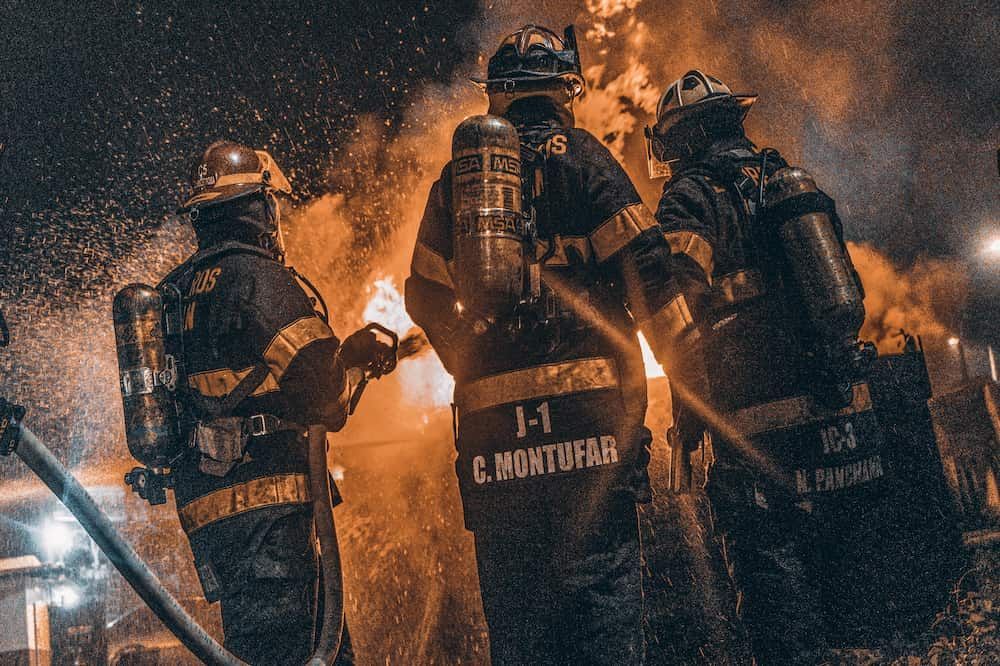
Argonite Against Inergen: Which Fire Suppression Is Best?
Fire safety management and risk assessments within workplaces nowadays are becoming more regulated by the year - with new rulesets and advice being shared… compared to in the past where it was overlooked.
While this is a positive breakthrough, there is still room for improvement when it comes to learning about what fire suppression methods are best for certain situations and environments.
In this post, we will be discussing the topic of Argonite vs Inergen and which fire suppression is best for putting a stop to fire hazards. Let’s take a closer look and see if there is a distinguishable winner between the two. Read on to learn more!
What is an Argonite Fire Suppression System?
Regarding what an Argonite fire suppression system is, the two main compounds that make up the naturally occurring gas are argon and nitrogen. There are zero chemicals put into the Argonite cylinders as all of the gases are given innately through the environment.
With this being a naturally occurring gas fire suppression system, there are some clear environmental advantages such as zero zone depletion potential (ODP), no global warming potential (GWP) and also zero atmospheric lifetime.
Argonite fire suppression systems have smoke and fire detectors, paired with nozzles and distribution piping to release the Argonite from the cylinders into the area where the fire is causing damage.
This extinguishing agent reduces the oxygen concentration to anywhere from below 15% all the way to 21%, meaning that the flames will be suffocated within 60 seconds upon release time.
What is an Inergen Fire Suppression System?
In relation to what an Inergen fire suppression system is, Inergen is made up of three naturally occurring gases (nitrogen, argon and carbon dioxide). These three gases are all naturally occurring, meaning that this system creates no environmental damage (zero ozone depletion potential, zero global warming potential and zero atmospheric lifetime).
Therefore, Inergen and Argonite are similar in the regard that they’re both excellent fire-suppressing agents for our environment and will cause little to no human health consequences additionally.
These clean agents are highly regarded as some of the most eco-friendly cylinders you can purchase for your sector of work - if they suit your interior design. A quick note is that if you’re wondering how the naturally occurring clean suppression agents are split when released, it will be 52% nitrogen, 40% argon and just 8% carbon dioxide.
This combination of gases works by reducing the oxygen level to around 12% (still safe for humans to be in the building) meaning it will extinguish the fire in less than 60 seconds whilst people can vacate the building safely without any further human intervention.
Argonite vs Inergen: Comparing the Two Agents
Now that you understand the premise of how both clean suppression agents work when released from their cylinders, Argonite vs Inergen is a debate that still continues within the fire safety community. Here, we’re going to compare the two to see if there is a clear winner… or if both are just suited to different scenarios.
Let’s take a look at the five main success factors (environment, safety, price, storage efficiency and speed of fire suppression) of a great fire suppression system and see which one comes out on top:
1 - Environment
When you look closely at these two gas fire suppression systems, it is notable that both of these use naturally occurring gases to extinguish the onrush of flames. Therefore, there is no ozone depletion potential, global warming potential or atmospheric lifetime.
Thus, this means that there is no clear winner in this department because they both do just as good a job as they can to prevent any environmental damage when disposing of an emergency.
2 - Safety
As for the safety precautions, they are similar, but there is a winner. With them both being inert gases, they both reduce into similar levels of oxygen when discarding the oncoming flames. Both can reduce the oxygen concentration to around 12%, meaning that humans will be safe in this environment for no more than ten minutes.
However, after ten minutes, people will begin having trouble breathing and this could be detrimental to their health. Consequently, ensuring that you have clear fire exits in the event of a fire will diminish the number of people left in the building after ten minutes.
Overall, with Inergen having Co2 in their mixture of gases - this can cause hyperventilation - meaning that it could potentially become more dangerous for a human compared to Argonite (which contains no carbon dioxide).
3 - Price
This point is where they start to pull away from each other. With Inergen having a limited number of suppliers available to the masses of companies, you’re more likely to find more cost-effective deals when you choose Argonite.
If price is a detrimental factor to the fire suppression system you want to install in your workplace, Argonite (IG-55) is going to be a more affordable option - compared to Inergren (IG-541).
4 - Storage Efficiency
To put it into perspective, with Inergen cylinders, you will need 18 cylinders to do the same job as three Novec 1230 fire suppression cylinders in the event of a fire. However, how do Inergen and Argonite compare?
Well, with the standard concentration of the gas being between 36-38%, they are both similar in how much gas would need to be utilised - thus, there is no clear difference in this regard.
Speed of Fire Suppression
With similar capabilities in gas concentration levels, this means it takes both Argonite and Inergen systems up to one minute to dispose of the fire. Therefore, for speed of fire suppression, Argonite and Inergen are exactly the same - if not milliseconds apart.
Is There a Winner Between Argonite and Inergen?
With both of these fire suppression systems having almost identical mixtures of compounds, it is challenging to determine any major differences. However, if you look closely at our analysis, you will notice that IG-55 (Argonite) will be more readily available to a consumer and will be safer for humans - leaving it to be the overall winner.
Yet, each inert gas is an extremely effective fire suppression technique for any workplace they’re stored in, so don’t be afraid to test both out!


